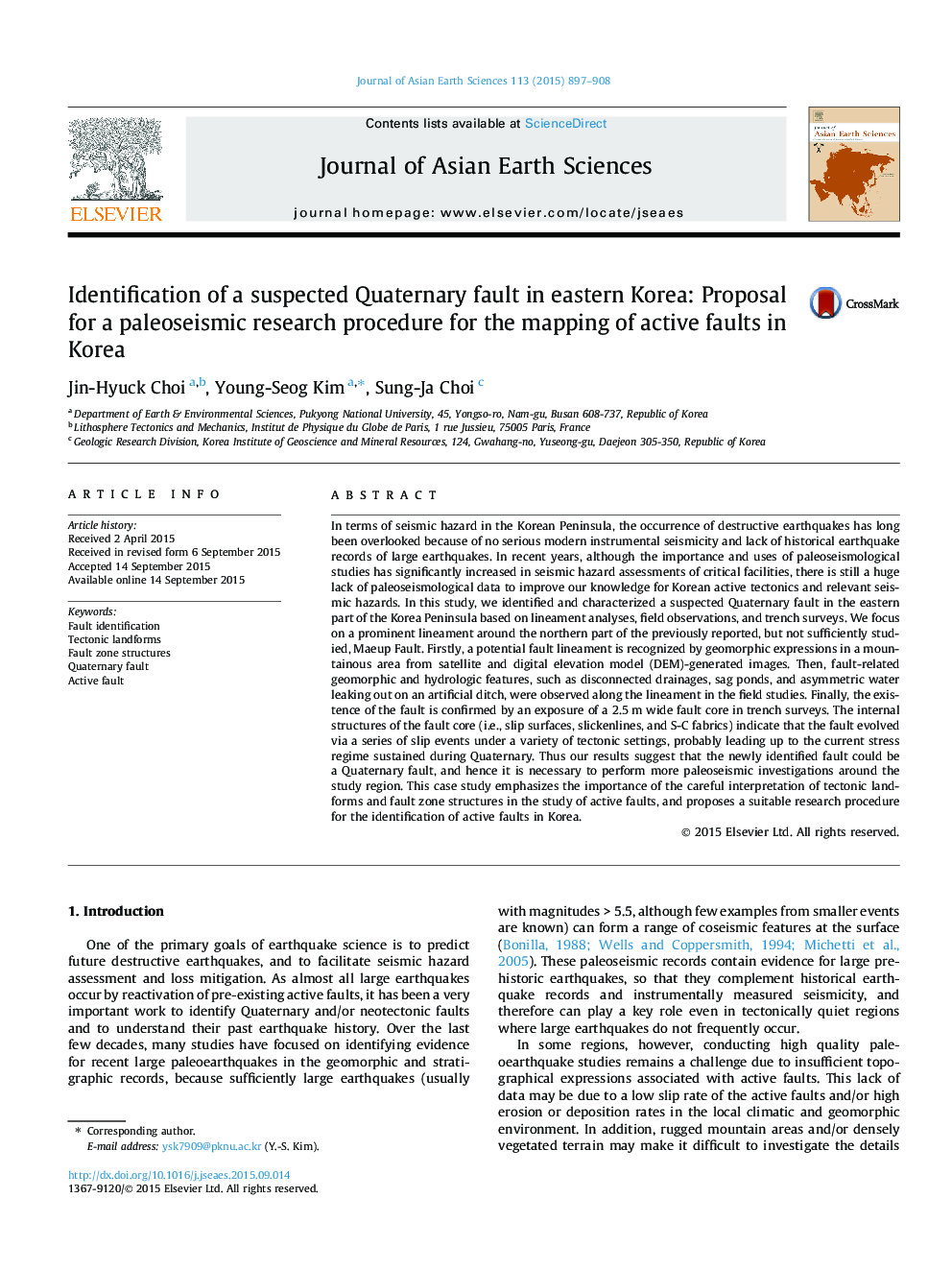| Article ID | Journal | Published Year | Pages | File Type |
|---|---|---|---|---|
| 4730339 | Journal of Asian Earth Sciences | 2015 | 12 Pages |
In terms of seismic hazard in the Korean Peninsula, the occurrence of destructive earthquakes has long been overlooked because of no serious modern instrumental seismicity and lack of historical earthquake records of large earthquakes. In recent years, although the importance and uses of paleoseismological studies has significantly increased in seismic hazard assessments of critical facilities, there is still a huge lack of paleoseismological data to improve our knowledge for Korean active tectonics and relevant seismic hazards. In this study, we identified and characterized a suspected Quaternary fault in the eastern part of the Korea Peninsula based on lineament analyses, field observations, and trench surveys. We focus on a prominent lineament around the northern part of the previously reported, but not sufficiently studied, Maeup Fault. Firstly, a potential fault lineament is recognized by geomorphic expressions in a mountainous area from satellite and digital elevation model (DEM)-generated images. Then, fault-related geomorphic and hydrologic features, such as disconnected drainages, sag ponds, and asymmetric water leaking out on an artificial ditch, were observed along the lineament in the field studies. Finally, the existence of the fault is confirmed by an exposure of a 2.5 m wide fault core in trench surveys. The internal structures of the fault core (i.e., slip surfaces, slickenlines, and S-C fabrics) indicate that the fault evolved via a series of slip events under a variety of tectonic settings, probably leading up to the current stress regime sustained during Quaternary. Thus our results suggest that the newly identified fault could be a Quaternary fault, and hence it is necessary to perform more paleoseismic investigations around the study region. This case study emphasizes the importance of the careful interpretation of tectonic landforms and fault zone structures in the study of active faults, and proposes a suitable research procedure for the identification of active faults in Korea.
